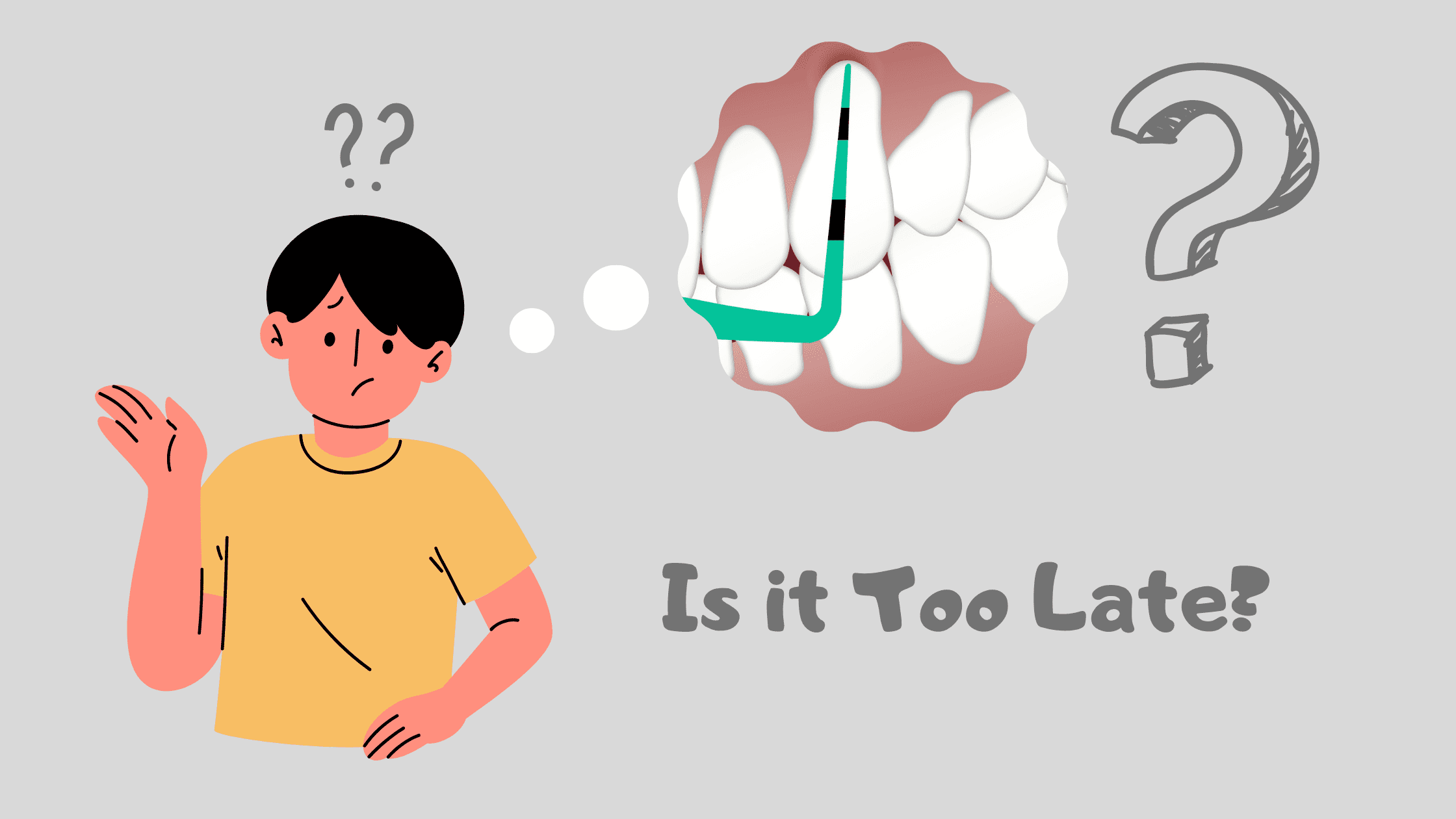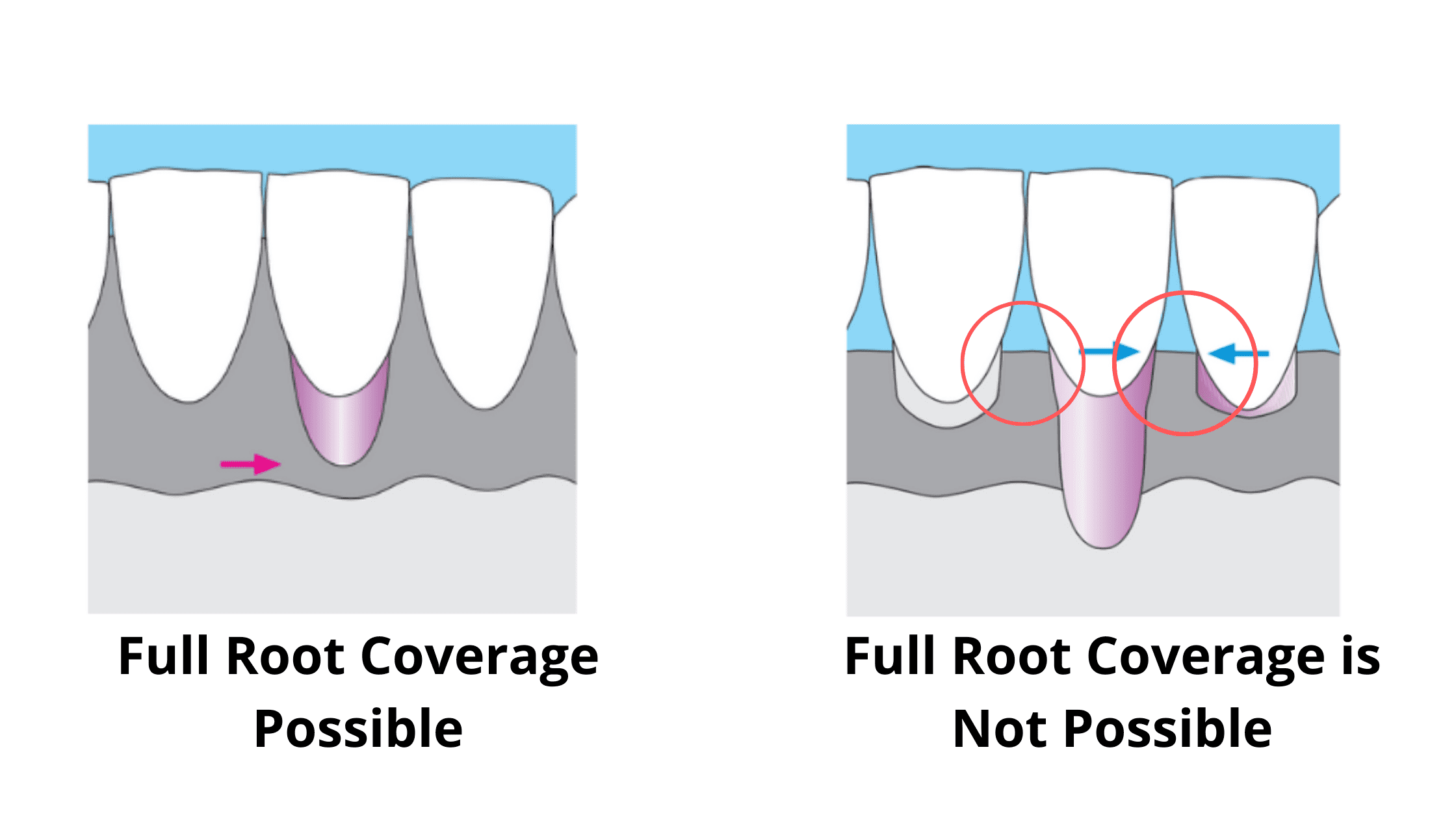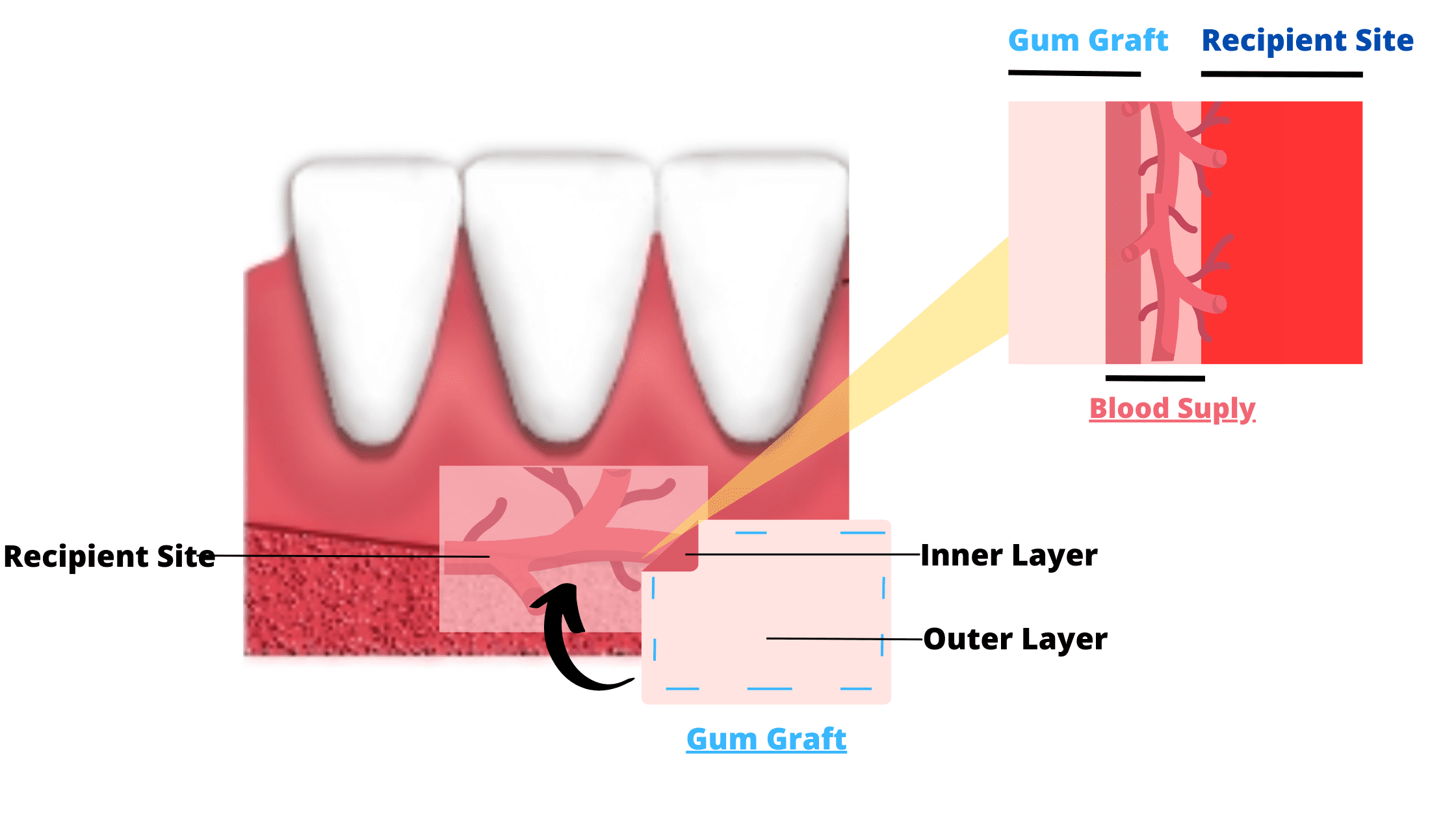Are You a Good Candidate for Gum Grafting or Is It Too Late
 Gum recession is a dental issue that worsens over time, exposing more of your tooth roots and making your teeth look longer.
Gum recession is a dental issue that worsens over time, exposing more of your tooth roots and making your teeth look longer.
If you notice your gums receding, acting early is crucial. The sooner you start treatment, the better the results.
Among the various treatment options, many people consider gum grafting surgery. But are you the right candidate? Is it too late? Do you even need it at all?
These common questions will be answered here to help you understand whether gum grafting is suitable for you and if now is the right time.
In this article...
- When Would You Need a Gum Graft?
- A gum graft is not the first step in addressing receding gums
- Is Anyone a Good Candidate for Gum Grafting?
- Can a Gum Graft Cover Exposed Roots in Advanced Gum Disease?
- When Does a Gum Graft Have the Best Chance of Success?
- When is It Too Late for a Gum Grafting Procedure?
- How to Prevent Gum Recessions and Halt Their Progress
When Would You Need a Gum Graft?
Gum grafting is a procedure that can be very beneficial for receding gums. However, not everyone with gum recession needs a gum graft.If the recession is stable and not causing any sensitivity or cosmetic issues, you may not need at all.
Excellent daily oral hygiene—including brushing with the right technique, cleaning between your teeth, and regular dental check-ups—may be all you need to stop the damage and prevent further problems.
However, there are some concerns that often come with receding gums where a gum graft would make sense. This is especially true if you experience:
- Tooth Sensitivity: If you experience tooth sensitivity due to exposed roots, a gum graft can help cover these areas and increase your comfort.
- High Risk of Root Decay: When the roots of your teeth are exposed, they become more susceptible to decay. A gum graft can provide a protective barrier, reducing the risk of root decay.
- Cosmetic Concern: This is the case when your primary concern is your smile appearance. A gum graft can be the best option to restore a more natural gum line.
- Progressing Recession: If your gums tend to pull back and worsen despite treatment efforts, a gingival graft can be considered to halt their progression.
A gum graft is not the first step in addressing receding gums
The primary goal of gum grafting is to cover exposed roots, stop the progression of recessions, and strengthen your gums to prevent future damage.However, surgery isn't the initial step. Our first priority is always to remove the cause of gum recession. Once that’s addressed, gum grafting can provide stable, long-lasting results.
Gum disease, trauma, or a combination of both are often the main culprits. So, the first step is to fix these underlying issues.
This may include correcting your brushing technique, switching to a softer toothbrush, and undergoing deep cleaning called scaling and root planing.
Once your gums are healthy and free of plaque, we can assess if you’re a good candidate for gum grafting.
Is Anyone a Good Candidate for Gum Grafting?
You’re not a good candidate for gum grafting surgery (or at least not yet) in these situations:- The root cause is not properly addressed
- Your gums are inflamed and unhealthy
- Poor oral hygiene
- Significant plaque buildup on your teeth and gums
- Difficulty in maintaining proper plaque control at home
- Presence of a medical condition that precludes surgery.
Like any surgical procedure, gum grafting carries some risks, especially for individuals with certain medical conditions. These risks include:
- High Risk of Remote Infection: If you have a medical condition or take medications that weaken your immune system, you may be at a higher risk of developing infections. During surgery, certain bacteria from the mouth can reach the bloodstream and affect other organs, such as the heart, lungs, or brain. In such cases, gum grafting may not be recommended, or additional steps may be necessary to minimize the risk of complications.
- High Risk of Bleeding: Some medical conditions or medications can increase the risk of bleeding during surgery. If you have a bleeding disorder or take blood thinners, your dentist may require blood tests to assess this risk.
- Diabetes: People with diabetes may experience slower healing and a higher risk of infection. However, if their blood sugar levels are well controlled, they are considered healthy patients and can be candidates for surgery.
- Heavy Smoking: If you're a heavy smoker, you'll need to cut back—or even better, quit altogether—before undergoing the procedure. Tobacco contains many harmful chemicals that irritate the gums and constrict blood flow. This can impact the healing process and increase the risk of graft failure.
Can a Gum Graft Cover Exposed Roots in Advanced Gum Disease?
As mentioned earlier, gum recession is a condition that tends to worsen over time if left untreated.At first, it typically affects only the front surface of the tooth. But as it progresses, it can extend to the spaces between the teeth. The gum between the teeth is called the interdental papilla.
When the interdental papillae are lost due to gum disease, achieving full root coverage becomes difficult—sometimes even impossible.


That’s because a gum graft depends on the blood supply from the underlying recipient site, particularly the gums between the teeth and the underlying bone.
If these structures have been damaged by gum disease, the graft won’t have enough support to survive fully. As a result, the outcome becomes less predictable, especially when multiple teeth are affected.

If these structures have been damaged by gum disease, the graft won’t have enough support to survive fully. As a result, the outcome becomes less predictable, especially when multiple teeth are affected.

So, unless there is good bone support and sound interdental papillae, a gum graft may not be appropriate to achieve full root coverage in severe forms of gum disease.
When Does a Gum Graft Have the Best Chance of Success?
A gum graft has the best chance of long-term success and complete root coverage when the recession is limited to the front part of the gums (without involving the gums between the teeth) and is isolated to one or just a few teeth.
But a gum graft does more than just cover exposed root areas.
It can also be used to thicken your gum tissue and make it more resistant to future damage (usually by a free gingival graft).
So even if you have moderate to advanced gum disease and full root coverage isn't possible, it's still not too late for a gum graft. It can thicken your gums and help prevent further recession. Of course, that's only possible if gum disease is stable and your gums are healthy and inflammation-free.
When is It Too Late for a Gum Grafting Procedure?
There are cases where gum grafting may not be feasible or may offer little to no improvement. In other words, it might be too late to reverse the damage. These situations include:- Aggressive and widespread gum disease: If your gum recession is due to a severe form of gum disease affecting many teeth—not just one or two—then gum grafting may not be a suitable option. In these cases, treatment focuses mainly on controlling the infection and inflammation, removing plaque buildup, and creating the right conditions for your gums and the underlying bone to heal.
- Severe Bone Loss: If more than two-thirds of the bone supporting the tooth has been destroyed by gum disease, it may be challenging to save the tooth or treat the recession through gum grafting procedures. In such cases, the tooth's chances of survival in the years to come are very low.
- Excessive Tooth Mobility: If the tooth is extremely loose and prone to falling out, gum grafting may not be a suitable solution. Tooth extraction might be the last resort. Next, the missing tooth can be replaced by an implant or other option.
- Extensive Tooth Damage: When a tooth is so severely damaged by decay or fracture that it can't be restored properly, again, there's no point in considering a gum graft, and tooth extraction may be the most reasonable option.
How to Prevent Gum Recessions and Halt Their Progress
To stop receding gums, you need to eliminate what caused them in the first place. The first step is to improve your oral hygiene routine. Here are some tips:- Maintain Good Oral Hygiene: Brush your teeth at least twice a day using a soft-bristled toothbrush and fluoride toothpaste. Be gentle and use small, circular motions. Don't forget to floss daily to remove plaque and debris from between your teeth.
- Use Proper Brushing Technique: Avoid aggressive brushing, as it can contribute to gum recession. Instead, use gentle pressure and a 45-degree angle to brush along the gumline.
- Stop teeth grinding: This harmful habit often goes unnoticed, but it can worsen existing gum recession and wear down your teeth. If you notice signs like worn teeth or jaw muscle pain in the morning, talk to your dentist. A custom night guard can help protect your teeth and limit further damage.
- Quit smoking: Smoking raises the risk of gum disease and reduces blood flow to the gums, making it harder for them to heal. Quitting can greatly boost your gum and overall oral health.
- Maintain a balanced diet: Eating foods rich in vitamins and minerals, especially vitamin C, E, D, zinc, and iron, can help support strong gums.
- Get regular dental check-ups: Visit your dentist regularly for cleanings and check-ups. They can catch early signs of gum disease and treat them before they turn into something more serious.
- Gum Graft Surgery: What it Is, Procedure & Recovery (clevelandclinic.org)
- Miller Classification of Marginal Tissue Recession Revisited After 35 Years | September 2018 | Compendium (aegisdentalnetwork.com)
- Complete root coverage in the treatment of Miller class III or RT2 gingival recessions: a systematic review and meta-analysis - PMC (nih.gov)
- Smoking, Gum Disease, and Tooth Loss | Overviews of Diseases/Conditions | Tips From Former Smokers | CDC
- The relationship between success of free gingival grafts and transplant thickness. Revascularization and shrinkage--a one year clinical study - PubMed (nih.gov)